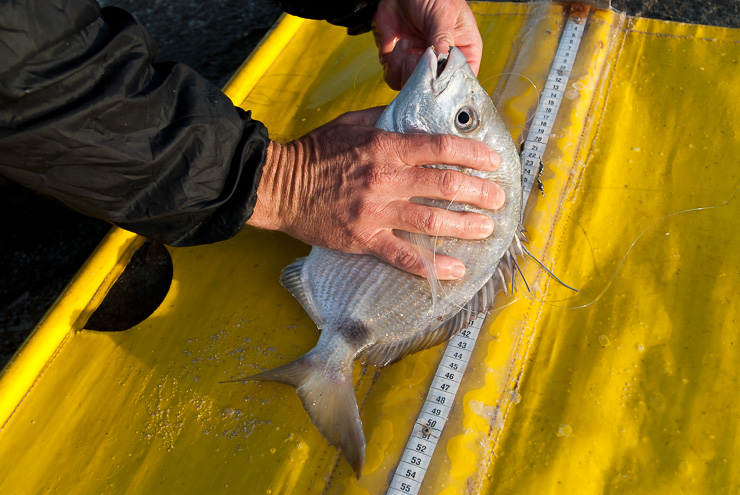
12 Jan Small victory for marine protected area
A settlement prevents fishing in the Tsitsikamma marine protected area for now, but does not affect draft regulations for its re-zoning, writes Louise de Bruin

Tagging a Blacktail in Tsitsikamma. The MPA provides breeding grounds for 11 of South Africa’s 17 threatened fish species. Photo © Peter Chadwick
Conservationists successfully reeled in support to stop a pilot recreational fishing project in the Tsitsikamma marine protected area (MPA), exposed by Oxpeckers in December 2015 (see “Marine Kruger Park opened for fishing”).
A settlement that prevents fishing for now does not affect draft regulations published for the re-zoning of the Tsitsikamma MPA, however. These proposals will see an estimated 20% of the MPA being rezoned.
The MPA, declared in 1964, is the oldest MPA in Africa and one of the largest. On January 8 2016, a group called Friends of the Tsitsikamma took the Department of Environmental Affairs and South African National Parks (SANParks) to the North Gauteng High Court to prevent them opening up the MPA to recreational fishers.
The government bodies opened the MPA on December 15 2015, before allowing the completion of the period of public consultation, as specified in the Government Gazette. Public consultation on the move should have run between November 19 2015 and February 1 2016.
Not following proper procedures caused concern among conservationists that a dangerous precedent would be set. They argued that, if the government could open Africa’s oldest MPA without following prescribed procedures, what would stop local communities around other reserves demanding the same rights.
Scientific evidence showed the opening of the MPA to local communities for recreational fishing would be unsustainable. Fish living in the MPA are the most productive breeders, producing millions of new fish every season.
Fish in this area are able to live up to 40 years. Scientists argue that if the area is opened up to fishing, it will take decades before the “breeder” fish can be replaced. Fish stocks are in a state of emergency and marine scientists have proved that MPAs are one of the only ways to save fish stocks.
The Friends of the Tsitsikamma Association was founded by a senior scientist at the Oceanographic Research Institute, Bruce Mann.
Acknowledging the needs of the Tsitsikamma community, Mann encouraged all parties to focus on the long-term importance of the MPA, rather than the short-term benefits to a small community of opening the MPA.
“We believe that the amazing natural heritage of South Africa, such as that protected within the Tsitsikamma MPA, is an asset that belongs to all South Africans – present and future. We would like our children and grandchildren to enjoy the fish and wildlife that past and current generations have had the privilege to enjoy. And there is no doubt that protected areas are one of the best ways to conserve entire ecosystems,” Mann said.
In an official media statement, the Environment Department and SANParks said the opening of the MPA was done to provide benefits for local ommunities that are currently denied the minimal use of natural resources.
“The trade-offs between the flow of benefits and the protection of the resources that provide benefits are complex and subject to continuous change as human needs evolve and as new knowledge accumulates. Government therefore has to be prepared to continuously reassess these trade-offs in consultation with its various partners,” the statement said.
Public comment on the proposed re-zoning runs until February 1 2016. Details can be found here.
